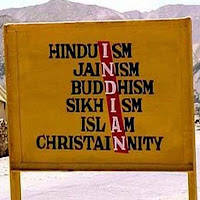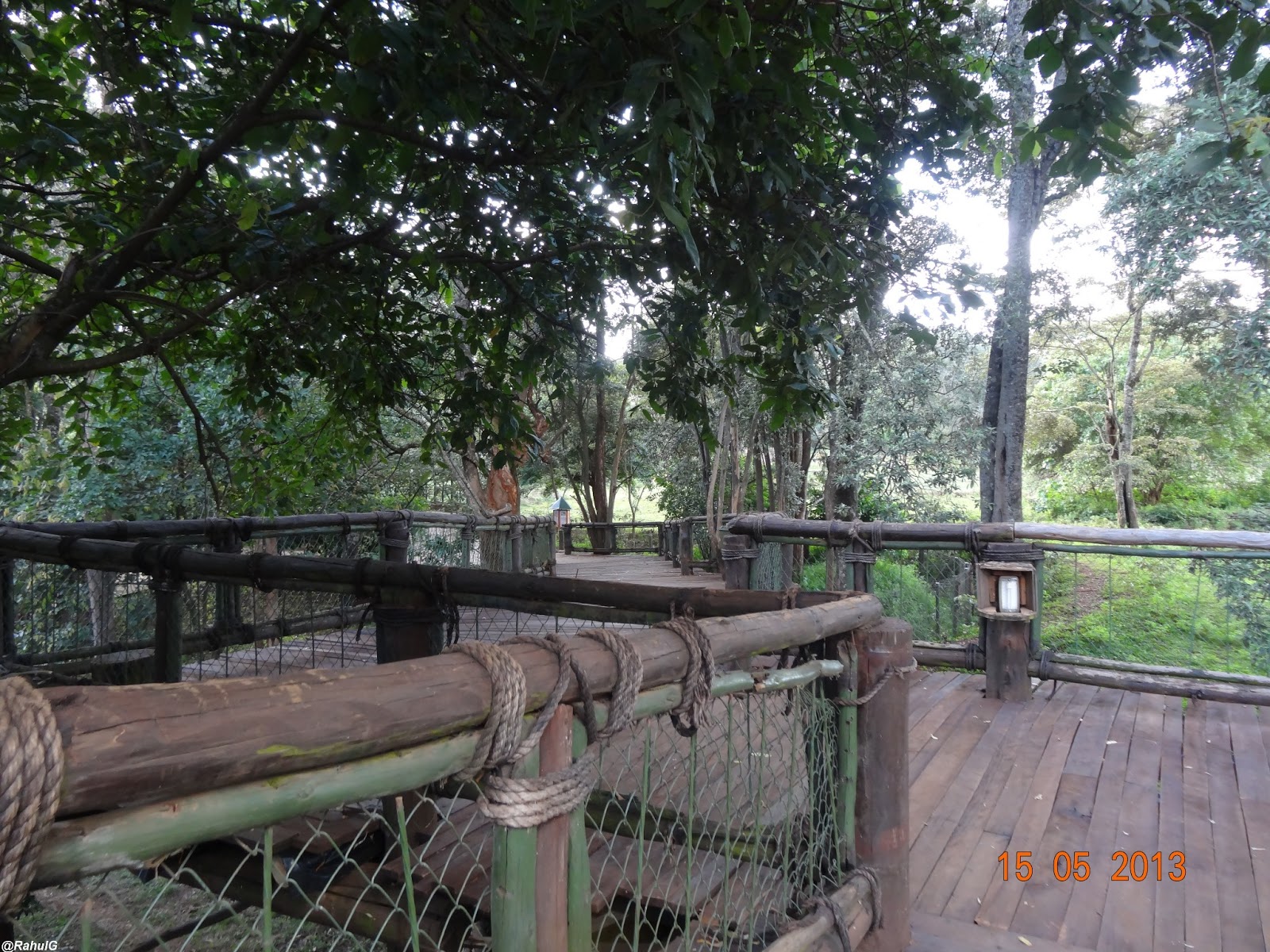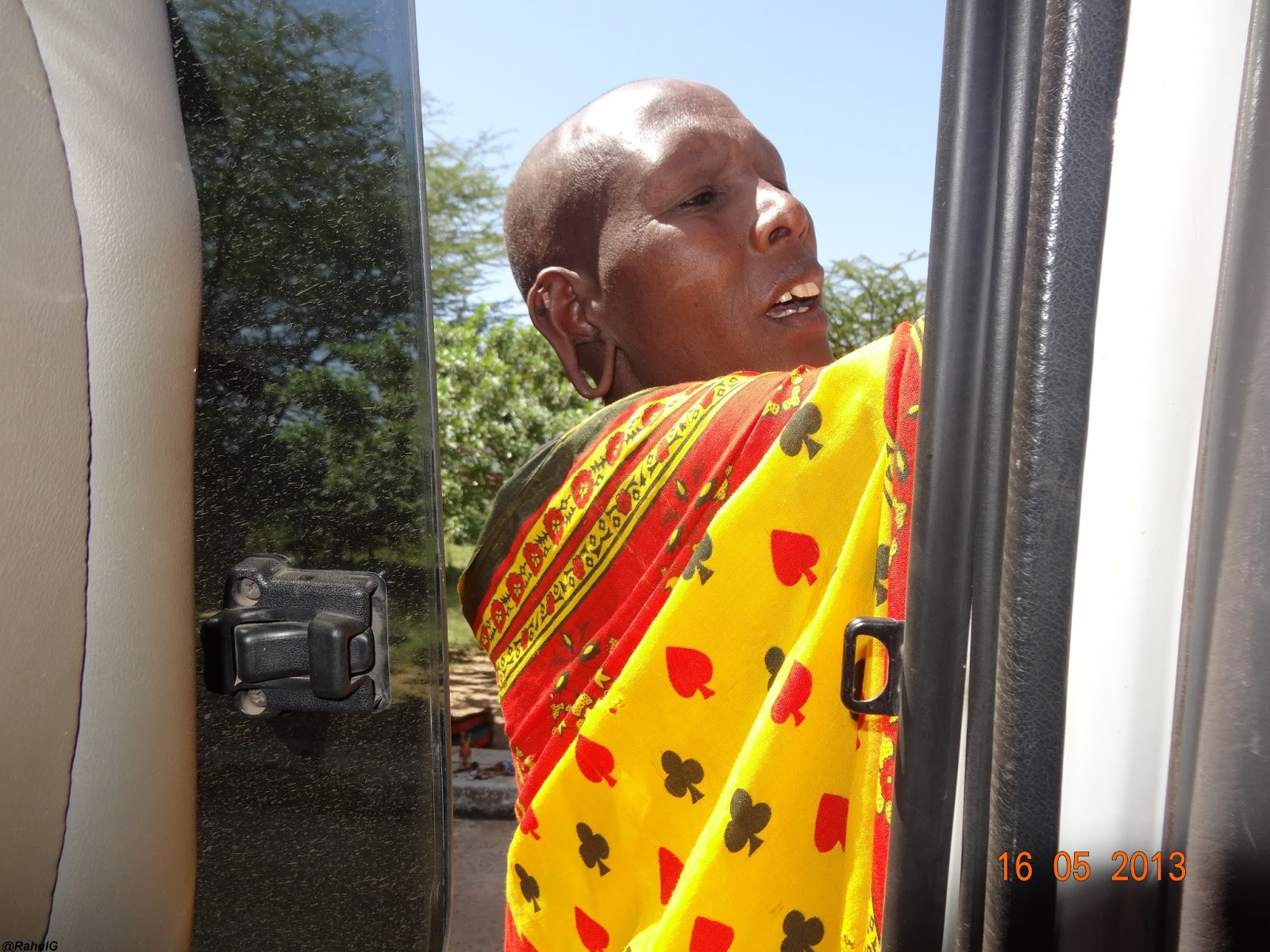Phew! It has been 3 long years since my last post here. And this is about something which is very close to my heart - history.
When we were in school, history and other such social sciences subjects were really not meant for middle class, ordinary people in non-metro towns, who wished to make big in their lives. Anyone with a modicum of intelligence and purpose was supposed to be studying science, maths and economics which only would help you in getting a good job with lots of money and social standing. Study of history, sociology etc were just trivial pursuits, better explained as whiling away of time.
Even today, the situation has not changed for a large number of people. Apart from a rarefied circle, a BA still elicits sneers from peers - "kuchh hua nahin hoga inse" types.
I strongly feel a better studying of history would have made us a better people who are more responsible and aware towards their surroundings. The following article is in the same vein, and I hope it makes some difference to someone. It was intended as a small letter to my son and developed in to a long rant, which I thought to share with you. (Its abridged version has been carried in the newspaper First India of 19th June 2019 under the heading "Histori-kally Yours).
Dear Son
Well,
it is been a long letter with lots of directions but if it has been able to
kindle in your heart just a little flame of honest curiosity about our history,
it would be worth the length. I wish you well, hoping that this journey in to
the quest for truthfulness would make you a better and complete person.
Love
Dad
When we were in school, history and other such social sciences subjects were really not meant for middle class, ordinary people in non-metro towns, who wished to make big in their lives. Anyone with a modicum of intelligence and purpose was supposed to be studying science, maths and economics which only would help you in getting a good job with lots of money and social standing. Study of history, sociology etc were just trivial pursuits, better explained as whiling away of time.
Even today, the situation has not changed for a large number of people. Apart from a rarefied circle, a BA still elicits sneers from peers - "kuchh hua nahin hoga inse" types.
I strongly feel a better studying of history would have made us a better people who are more responsible and aware towards their surroundings. The following article is in the same vein, and I hope it makes some difference to someone. It was intended as a small letter to my son and developed in to a long rant, which I thought to share with you. (Its abridged version has been carried in the newspaper First India of 19th June 2019 under the heading "Histori-kally Yours).
Dear Son
Being
sixteen is a wonderful age. As the famous American artist and philosopher
Raymond Duncan has said – “The best substitute for experience is being sixteen”.
But then, you cannot not grow up and remain sixteen all your
life, can you?
As
you grow up to be a teen and then an adult, and gain some experience, you would
see the world unfold before you in all its beauty and magnificence, and
possibly in some of its ugliness and cruelty too. You would meet people with differing
views on how the world should be like, some of which you would agree with and some
you won’t. You would read books, watch movies and make new friends. Shaped by
all of this, you would form your own opinion, your own world view to help you
make sense of what is going on in your society, country and the world.
This
would happen mostly without even your realizing it – slowly and surely, over
years. But whether or not you realize it, it is a very important part of your
growing up, because growing up is not all physical, right? Along with the body,
the mind has to grow too, to help you make more informed opinions and
decisions. It is here that one knowledge stream could help you immensely – History.
History?
– you would ask. That boring-litany-of-dates-and-kings-and-battles-history? Yes,
the same. Because, as the famous Uruguayan journalist and writer Eudardo
Galeano has said – “History never really says goodbye. History says, ‘See you
later’ ”. What this means is that historical situations and events, though
unique to their times, have a habit of repeating themselves. And it would do
well to learn from history. But hold the thought here.
I
have been using the word history repeatedly. What exactly do we mean when we
say history? Apart from a dictionary definition, which you already know, that
is? Well, to know what history actually is, a better starting point would be to
understand what history isn’t.
· History is not
just a list of years and dates when power changed hands or some important war
was fought. I am sure you and your friends must have spent many sleepless
nights cramming up these dates. History is also about the long periods in
between these important dates when people just went on with their lives –
earning their livings, raising families, discovering new things, celebrating
their newborns, mourning their dead, enjoying their happy moments and grieving
their losses. These are the stories you should look for. Really good books and
movies take you back to those times. So, don’t take the dry route of only
mugging up the dates. Read between these dates.
· History is also not only about
kings or leaders of countries or such important figures. Important as these famous
personalities are, their lives might not be representative of the general
public of the times. Look out for historical stories away from the mainstream,
which tell you about the common man of any era – how he lived, what he ate,
what his customs and religion were, what he (or she, of course) believed in
etc. Look a little closer at the name – history – some say it speaks his
story, the man’s story! So the next time you pick up a history book,
read a little carefully and you would hear the common man’s story.
·
History is most definitely not
a flogging tool to prove other people wrong or making them feel ashamed or
worked up about their past. Judging someone and behaving with him on the basis
of the historical past is the worst form of expression of superiority one could
have over others. You would understand that one does not have any say in what
kind of family and circumstances one is born in. It is all a matter of chance,
for which no one should be castigated.
Now
that we are have a sense of what history is or isn’t, we can come back to our
original question of why and how should we study history? How does it
actually help us form an opinion, a world view, as talked earlier?
·
Here is a quote from a newspaper column
by the famous historian Ramachandra Guha. He says –
“The
uses of history are educative rather than instrumental. By writing in rich
details about other peoples and past times, the historian can expose his fellow
citizens to a wider range of human social experience. A deeper knowledge of how
others have lived and labored – or failed and succeeded – allows one to be more
fully aware of the contingencies and peculiarities of one’s own life.
A knowledge of history
may thus make the aam aadmi more self-critical,
less xenophobic. As for political (or business or sporting) leaders, a knowledge
of history is – or should be – the best antidote to hubris.”
What
this quote says is that knowledge of history makes you a much fuller and
complete person, sensitive and accommodative to other’s experiences and
sensibilities. Man is a social animal, they say. Indeed he is, and your being
aware about others in the society will make your and others’ lives more
meaningful.
·
History helps you place your coordinates
in the world. Your science classes might have told you about the human race
originating 2 million years ago from Africa. Won’t it be fascinating to know what
happened thereafter, how do you trace yourself to your ancestors? As an aside,
you would find it interesting that National Geographic magazine is running a
very elaborate scientific exercise to analyse historic patterns of DNA from
participants around the world to better understand our shared historic roots.
(source: genographic.nationalgeographic.com/about)
·
India is home to one of the oldest
civilizations in the world – around 2500 to 3000 years old. Along with a rich
history, we also have a vast treasure of mythology enriched with magnificent
stories and widely revered & loved characters, real to many of us. For
example, Mahabharat and Ramayana are undoubtedly one of the greatest epics the
world has ever seen. In the millennia since they have been written, these epics
have acquired a life of their own and their characters are probably the most
well-known and respected characters in the Indian religious pantheon. At the
same time, there is a strong line of thought which considers them as real
history and not just mythology. The truth is somewhere in between these two
extremes. It is important to appreciate the points of difference between
history and mythology, between fact and fiction. Knowing correct history would
help us.
At
this point, I hope you have come around to thinking that this history is not so
boring after all, and maybe you could think of reading or watching some. With
the surfeit of history available on the internet and TV shows, it is important
to remember some guidelines which shall help you make the most of your
interest. I will list them down as follows:
·
History requires understanding, not
correction
In the politically
and socially dynamic societies like ours, people group on the basis of region,
caste, religion, political support etc., and as is human nature, there is a
tendency to establish oneself or one’s group as superior to others.
To feel
superior, even on a false basis, over-zealous groups sometimes start
propagating lies in name of “correct history”, and start opposing uncomfortable
truths which puncture their false claims. You must have seen groups protesting
to ban some movie or some book, because as per them, it makes them look bad or
wicked or cruel or whatever they don’t wish to look like.
But what we are
seeking to understand in history is the truth, howsoever uncomfortable it might
be. True knowledge gives us more courage and self-worth than some manufactured
past.
An attempt to
correct history, if any such thing is possible at all, is more often than not
leading one on to a wrong path of self-glorification, away from joy of
acquiring true knowledge.
·
Choose your sources wisely
For starters,
school text books are a rather good way to gain an overview of history. If you
are in India, Social Science NCERT text books for Class 8th to 12th
have quite well-researched, unbiased and distilled content for use of
young scholars.
Once you have gained
an overview, choose some specific event of history and look up bestsellers
lists on history books on the internet. There are some absolutely wonderful
authors who write well-researched history and in whose hands, history springs
to life.
I could suggest
some – The Rise and Fall of the Third Reich by William E Shirer for World War
2, or The Last Mughal by William Dalrymple for the last days of Mughal Empire
in India or India After Gandhi by Ramchandra Guha for history of modern India
after independence etc. Talk to your teachers and elders for their suggestions
about other good sources.
·
Separate fake from real
Internet is a
pretty reliable guide on genuine history stuff to read or watch. At the same
time, there is a lot of unverified and false history floating around the web
and also on the social media. Similarly, there is a lot of literature which is
not genuine history but just propaganda. So be on your guard. Be exposed to all
points of view but use your common sense and try to distil correct facts from
the plethora of information around. There are a lot of websites dedicated to
sounding out fake news. Find out about them.
·
Draw correct conclusions. If in
doubt, wait.
Reading and
watching previously unknown facts will inevitably lead you to form some
opinions and draw conclusions. Remember that opinions change with knowledge and
experience acquired. So, don’t be fixed in your opinions. Keep your mind open,
keep reading and wait for the complete picture to emerge. Don’t rush in to
drawing half-baked conclusions.
·
Time and context are important
Human civilization
is approximately 4000 years old. Every minute contributing to these four
millennia is connected to every other minute by a cause and effect
relationship, howsoever wide and apart they seem.
A large part of
studying history is about understanding these relationships, and knowing that historical
events and personalities are products of the prevailing time and circumstances.
When we see the history through the pigeon-hole of present times and our limited
experience, we sometimes tend to forget this.
As an example,
sometimes the words ‘secular’ or ‘nationalistic’ are used to describe events
which occurred 300 years ago. This is not correct because these ideas have
originated and have been defined only around 150 years back.
Remember
therefore that to appreciate historical events, we have to place them in
correct context of prevailing time and circumstances.
· Heroes are never totally white, nor
are the villains absolutely black.
Brought up on
fairy tales and popular movies, most of us think of heroes and villains as
uni-dimensional characters, meaning that heroes have to be all good, and
villains supremely bad. But it is not so in real life. A person is a mixture of
these two, never wholly black, never wholly white, but some shade of grey in
between.
Naturally, it
applies to our historical figures also. Someone might have been a great warrior
but a not-so-good father. Another one might have been a patron of arts but a
cruel person too. Great heroes too can have feet of clay. History is full of
such heroes.
It is necessary
to appreciate these fine personality traits. Appreciate a hero for his good
qualities but don’t make him invincible in your head.
·
Recognize and respect the other
person’s view point
Probably the
most important lesson to be learnt from history is that even though facts are
supposed to be sacred, they could have different effects on different people.
You are not the only one drawing conclusions from the past. You have to
recognize and respect the other person’s point of view.
Love
Dad








































